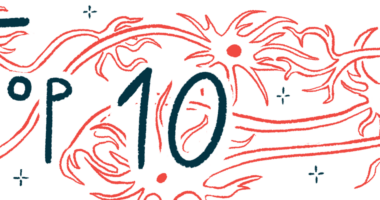New Study Uncovers Mechanism of CuATSM, ALS Therapy Now in Trials
Findings may help ID patients most likely to respond to treatment

CuATSM, a potential amyotrophic lateral sclerosis (ALS) therapy that’s now in clinical trials, may work by altering how certain cells in the brain generate energy, a new study suggests.
Researchers say these findings may help to identify patients most likely to respond to the experimental treatment.
“Screening patient derived [neuron-supporting cells] may be a useful personalized tool to evaluate therapeutic effectiveness, significantly reducing the time it takes to find the best treatment plan for an individual patient,” the team wrote.
The study, “CuATSM effectively ameliorates ALS patient astrocyte-mediated motor neuron toxicity in human in vitro models of amyotrophic lateral sclerosis,” was published in Glia.
Uncovering the mechanisms of CuATSM
CuATSM — the Cu for the element copper — is an imaging agent that the Australian company Collaborative Medicinal Development (CMD) is developing as a therapy for ALS. While its exact mechanism of action remains unclear, CuATSM is thought to have antioxidant properties.
In a mouse model of ALS, the therapy was shown to improve survival and preserve motor neurons, which are the nerve cells that control voluntary movement that are progressively lost in ALS. Its use was associated with a reduction in oxidative stress and astrocyte reactivity, two processes implicated in ALS.
Oxidative stress is a type of cellular damage resulting from an imbalanced production of potentially harmful oxygen-containing molecules and the antioxidants necessary to neutralize them. Astrocytes are neuron-supporting, star-shaped cells that, when abnormally activated, can cause damage to motor neurons.
Promising hints of efficacy in a Phase 1 clinical trial (NCT02870634) prompted the launch of a Phase 2/3 trial (NCT04082832) to test CuATSM against a placebo in ALS patients.
The Phase 2/3 trial and its extension study (NCT04313166) have reportedly concluded, though results have not yet been released.
One of the common challenges in ALS clinical trials is that, often, some patients will respond to treatment better than others. Identifying which patients are most likely to benefit from treatment can improve trial design, and give these studies the best chance of getting positive results. That, in turn, can leads to a treatment’s advancement.
With this in mind, a team of scientists in the U.S. evaluated the effects of CuATSM treatment in lab-grown astrocytes derived from ALS patients. The team took skin cells from seven people with familial or sporadic ALS and two healthy individuals and reprogrammed them into astrocytes, referred to as iAs.
Astrocytes are easy to grow in laboratory conditions, which makes them “well suited for drug testing,” the researchers wrote.
Results showed that growing iAs from ALS patients alongside mouse-derived motor neurons led to a reduction in motor neuron survival relative to iAs from healthy controls. But when patient-derived iAs were pretreated with CuATSM, motor neuron survival was significantly increased in most, but not all, cases.
“We found a subgroup of iAs that retained their toxicity despite CuATSM treatment, suggesting that not all patient cell lines were amenable to the treatment. Thus, CuATSM clinical trials may contain a subpopulation of patients that do not respond to the therapeutic treatment,” the researchers wrote.
Identifying patients for whom therapy works
Based on these data, each of the patients was classified as a responder or non-responder. The researchers then analyzed the astrocytes, looking for features that distinguished the two groups.
“To identify a common denominator for CuATSM effectiveness, we evaluated cellular and molecular pathways previously identified to play a role in ALS,” the team wrote.
The goal was to find “a cellular phenotype common among responders that was absent in non-responders and could be used as a predictive marker.”
In line with its known antioxidant properties, the researchers found that CuATSM reduced oxidative stress in astrocytes from most patients. However, oxidative stress markers did not clearly distinguish responders from non-responders.
Measures of another type of ALS-associated damage called endoplasmic reticulum stress also did not meaningfully differentiate the two groups, nor did differences in the levels of certain protein clumps.
However, the researchers found that activity differences in mitochondria, the cell’s powerhouses, could differentiate responders from non-responders.
Responder iAs showed significantly higher mitochondria-driven energy production compared with cells derived from both non-responders and healthy controls.
“The metabolic data suggests that patient responders have a unique mitochondrial [profile] that distinguishes them from both healthy and ALS non-responders,” the researchers wrote.
Further experiments demonstrated that treatment with CuATSM significantly reduced mitochondria-driven energy production in responder-derived astrocytes, approaching levels seen for healthy controls.
At the same time, treatment increased the amount of energy astrocytes that were generated via glycolysis, a mitochondria-independent process that releases lactate, a molecule that can be used by motor neurons as an energy source.
“We propose that the mechanism of CuATSM action on ALS responder cell lines is due to the reversion of their metabolic [profile] to that of healthy controls,” the researchers wrote.
“CuATSM may improve iAs metabolic support of motor neurons by acting as a metabolic switch triggering a metabolic reprogramming characterized by an elevation of aerobic glycolysis and subsequent lactate production, and reduction of mitochondrial activity in the responsive cell lines,” they added.
The team suggested that these findings could form the basis for work to identify patients most likely to respond to treatment with CuATSM or other investigational therapies.
“Further exploration is needed to evaluate translatability of astrocyte screening approaches to patients with ALS,” the team wrote.








